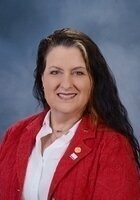All NASM Resources
Example Questions
Example Question #7 : Nasm Cpt
Which of these is not a benefit of a warm-up?
Increased heart and respiratory rate
Increased tissue temperature
Increased psychological preparation
Direct hypertrophy of the muscles that are warmed up
Direct hypertrophy of the muscles that are warmed up
Hypertrophy, the building of muscles, is not a goal of warm-up; a warm-up is used to increase heart rate and temperature to provide an effective transition into exercise
Example Question #8 : Nasm Cpt
Which of these muscle pairings can exhibit reciprocal inhibition and altered reciprocal inhibition?
The rear delt and the gastrocnemius
The pectoral and hamstring
The bicep and triceps
The bicep and the quadriceps
The bicep and triceps
The bicep and triceps are the only agonist and antagonist pairings of muscles from the given options
Example Question #9 : Nasm Cpt
Which of these is not a main goal of plyometric training?
Increase rate of force production
Increase maximal heart rate
Enhance neuromuscular efficiency
Improve functional eccentric strength
Increase maximal heart rate
Increasing maximal heart rate is not one of the main goals of plyometric training which mostly focuses on developing explosive and quick movement
Example Question #10 : Nasm Cpt
What kind of stretching involves applying force to tender areas using implements such as a foam roll?
Static stretching
Active-isolated stretching
Dynamic stretching
Self-myofascial release stretching
Self-myofascial release stretching
Self-myofascial release (SMR) stretching often uses implements such as a foam roller to apply force to tender and sore areas of the body
Example Question #1 : Exercise Technique
Which sensory receptor will sense a muscle being stretched?
Muscle spindles
Chemoreceptor
Mechanoreceptor
Joint receptor
Muscle spindles
Muscle spindles are sensory receptors that run parallel to muscle fibers, therefore they are sensitive to when the fibers contract and stretch
Certified Tutor
Certified Tutor
All NASM Resources




